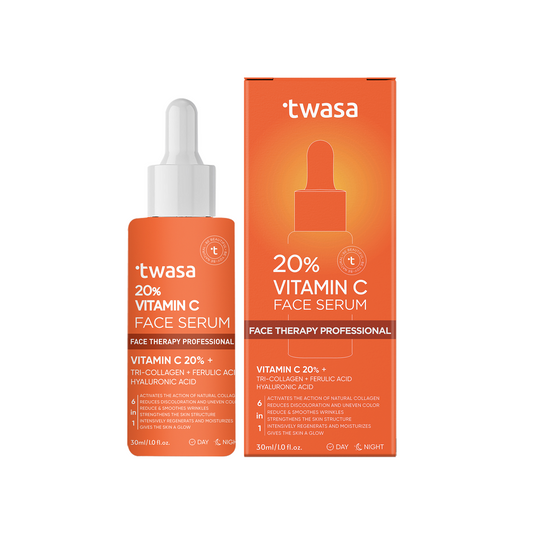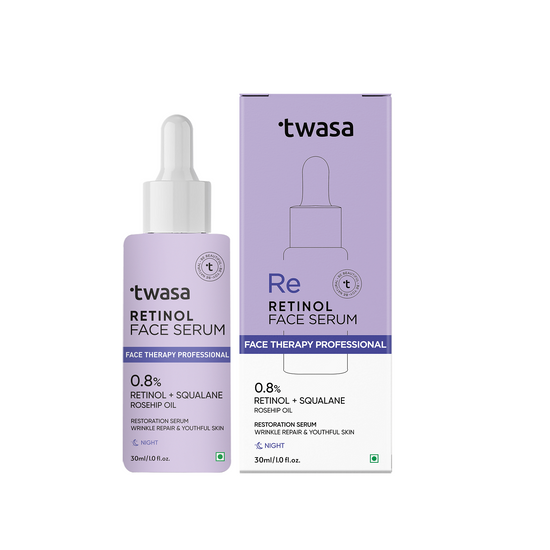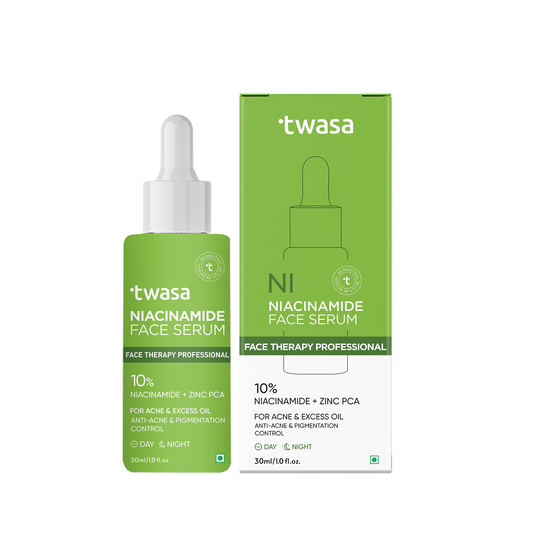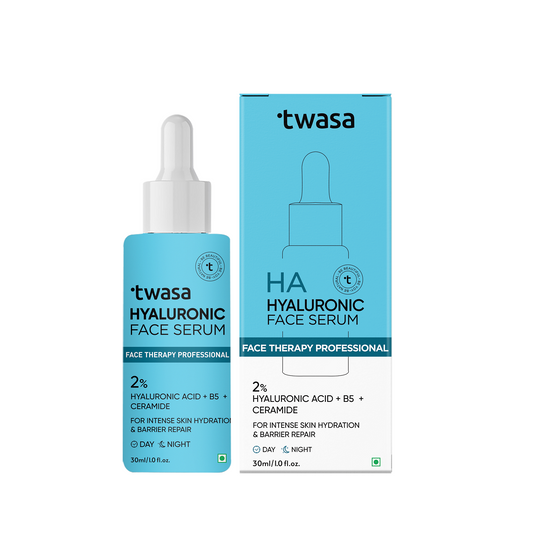How to Layer Face Serum Correctly for Maximum Results

Layering your skincare products the right way can dramatically improve your skin health — especially when it comes to face serums. Serums are lightweight, highly concentrated formulations designed to penetrate deeper than regular creams. Whether you’re using a Vitamin C Serum, Hyaluronic Acid Serum, or Retinol Serum, knowing the correct order makes all the difference.
In this complete guide, you’ll learn how to layer face serum correctly, which serum combinations work best, and how to pick the right one based on your skin type — oily, dry, combination, or sensitive.
Why Layering Face Serums Matters
Serums deliver active ingredients directly into the skin. When layered in the correct order:
✔ They absorb better
✔ Enhance each other's performance
✔ Target multiple skin concerns at once
✔ Deliver maximum results without irritation
Using a Brightening Serum, Pigmentation Serum, or Anti-Aging Serum incorrectly can reduce its effectiveness — or worse — cause reactions.
General Rule of Layering Serums
Always apply products from thinner to thicker consistency.
Order:
1. Cleanser
2. Toner
3. Water-Based Serums (Niacinamide, Hyaluronic Acid, Vitamin C, Snail Mucin)
4. Oil-Based Serums (Retinol, Peptides, Collagen, Kojic Acid)
5. Moisturizer
6. Sunscreen (AM)
Step-by-Step Guide to Layering Face Serums
Step 1: Cleanse Properly
Start with a gentle cleanser to remove dirt, oil, and makeup. Proper cleansing ensures your skin absorbs the serums effectively.
Step 2: Apply Toner
A hydrating toner balances pH levels and prepares the skin for better absorption.
Step 3: Layer Water-Based Serums
These include:
✔ Vitamin C Serum – Best for brightening and glow
✔ Niacinamide Serum – Controls oil, minimizes pores
✔ Snail Mucin Serum – Heals and repairs skin barrier
✔ Hyaluronic Acid Serum – Deep hydration and plumping
✔ Glycolic Acid Serum – Exfoliates and smoothens skin texture
Apply in thin layers and wait 30 seconds between each.
Step 4: Layer Oil-Based or Potent Serums
These penetrate deeper and target aging, pigmentation, and wrinkles:
✔ Best Retinol Serum – Speeds cell renewal, reduces fine lines
✔ Collagen Serum – Firms and tightens skin
✔ Peptide Serum for Face – Strengthens skin structure
✔ Kojic Acid Serum – Brightens dark spots & pigmentation
✔ Best Wrinkle Serum – Reduces visible aging signs
Important: Never use Retinol + Vitamin C together. Use one in the morning and one at night.
Step 5: Seal with Moisturizer
A moisturizer locks in all the actives and prevents water loss.
Step 6: Sunscreen (Daytime)
No matter how good your routine is — no sunscreen means no results. SPF protects your skin from UV damage and prevents hyperpigmentation.
Best Face Serum Layering Combinations (Based on Concerns)
For Glowing Skin
✔ Vitamin C Serum
✔ Hyaluronic Acid Serum
✔ Niacinamide Serum
For Dark Spots & Pigmentation
✔ Pigmentation Serum (Kojic Acid, Alpha Arbutin)
✔ Glycolic Acid Serum (Night Only)
✔ Sunscreen (Daily)
For Anti-Aging / Wrinkles
✔ Peptide Serum for Face
✔ Best Retinol Serum (Night Only)
✔ Collagen Serum
For Acne-Prone / Oily Skin
✔ Niacinamide Serum
✔ Salicylic Acid Serum
✔ Pore Minimizing Serum
For Dry / Dehydrated Skin
✔ Hyaluronic Acid Serum
✔ Snail Mucin Serum
✔ Best Hydrating Serum
For Sensitive Skin
✔ Best Serum for Sensitive Skin
✔ Niacinamide Serum
✔ Peptide Serum
Day vs. Night Serum Routine
Morning (AM) Routine
✔ Cleanser
✔ Toner
✔ Vitamin C Serum or Niacinamide Serum
✔ Moisturizer
✔ Sunscreen
Night (PM) Routine
✔ Cleanser
✔ Toner
✔ Retinol, Peptide Serum, or Snail Mucin Serum
✔ Moisturizer
Nighttime is best for Retinol Serum, Glycolic Acid Serum, and Night Serum for Face because your skin repairs itself while you sleep.
Dos and Don’ts of Layering Serums
Do:
✔ Patch test new serums
✔ Start slow — one serum at a time
✔ Use sunscreen daily
✔ Store Vitamin C in a cool, dark place
Don’t:
✔ Overload 4–5 active serums at once
✔ Mix Retinol with AHA/BHA or Vitamin C in the same routine
✔ Apply on damp dirty skin
✔ Skip moisturizer after serums
How to Choose the Right Face Serum
Face Serum for Oily Skin
Look for Niacinamide, Salicylic Acid, Tea Tree, Zinc.
Face Serum for Dry Skin
Choose Hyaluronic Acid, Squalane, Snail Mucin, Ceramides.
Face Serum for Men
Focus on lightweight, non-greasy formulas with Niacinamide, Vitamin C, or Hyaluronic Acid.
Best Face Serum for Women
Choose serums based on skin goals — glow, anti-aging, dark spots, acne, etc.
Top Face Serum Benefits You Should Know
✔ Brighter and even-toned skin
✔ Reduced wrinkles and fine lines
✔ Improved hydration & elasticity
✔ Refined pores and smooth texture
✔ Fades pigmentation and dark spots
✔ Faster skin renewal & repair
Dermatologist Recommended Serums to Try
✔ Niacinamide Serum – Pore minimizing + oil control
✔ Vitamin C Serum – Brightening + glow
✔ Hyaluronic Acid Serum – Deep hydration
✔ Best Retinol Serum – Anti-wrinkle + tightening
✔ Kojic Acid Serum – Best Serum for Hyperpigmentation
✔ Peptide & Collagen Serum – Firming + anti-aging
Explore the Best Face Serum Collection on Twasa
Twasa offers premium, scientifically formulated serums for every skin type and concern. Whether you need a Skin Brightening Serum, Night Serum for Face, or a Face Tightening Serum, you will find the perfect match for your skincare goals.
👉 Shop Now & Get Visible Results with Twasa Face Serums
Frequently Asked Questions (FAQs)
1. What is a Face Serum and why should I use it?
A Face Serum is a lightweight skincare product with concentrated active ingredients that penetrate deeper than creams. It helps target concerns like dullness, wrinkles, dark spots, acne, and dehydration more effectively than moisturizers alone.
2. How do I apply Face Serum correctly for best results?
Apply Face Serum on clean, slightly damp skin after cleansing and toning. Use 2–3 drops and gently pat into the face before applying moisturizer. Layer thinner water-based serums first, followed by oil-based serums.
3. Which Face Serum is best for glowing skin?
A Vitamin C Face Serum, Niacinamide Serum, or Brightening Serum is best for glowing skin. These boost radiance, fade pigmentation, and even skin tone.
4. Can I use Face Serum every day?
Yes. Most Face Serums like Hyaluronic Acid, Niacinamide, and Vitamin C can be used daily. Serums like Retinol or Glycolic Acid should be applied only at night, 2–3 times a week, depending on skin sensitivity.
5. What is the difference between Face Serum and moisturizer?
A Face Serum delivers active ingredients deep into the skin, while a moisturizer seals hydration on the surface. For best results, use serum first, then apply moisturizer to lock it in.
6. Which Face Serum is good for oily skin?
Niacinamide, Salicylic Acid, and Tea Tree Face Serums are best for oily and acne-prone skin. They regulate oil production, shrink pores, and reduce breakouts.
7. What Face Serum should I use for dry skin?
A Hyaluronic Acid Face Serum or Snail Mucin Serum provides intense hydration, improves elasticity, and prevents moisture loss in dry skin types.
8. Can I layer multiple Face Serums?
Yes, you can layer Face Serums if they are compatible. Use water-based serums (Vitamin C, Hyaluronic Acid, Niacinamide) first, then oil-based serums (Retinol, Peptides, Kojic Acid). Avoid mixing Retinol with Vitamin C in the same routine.
9. What is the best Face Serum for dark spots and pigmentation?
Kojic Acid, Alpha Arbutin, Niacinamide, and Vitamin C Face Serums are highly effective for fading dark spots, tanning, and hyperpigmentation.
10. Is Face Serum suitable for sensitive skin?
Yes, but choose a gentle Face Serum like Niacinamide, Centella, or Peptide Serum. Avoid strong acids and retinol until your skin builds tolerance.
11. When should I apply Face Serum – day or night?
Apply Vitamin C, Niacinamide, and Hyaluronic Acid Serums in the morning. Use Retinol, Glycolic Acid, and Peptide Serums at night for skin repair.
12. How long does it take for a Face Serum to show results?
Most Face Serums show visible results within 2–4 weeks of consistent use. Anti-aging and pigmentation serums may take 6–8 weeks.









